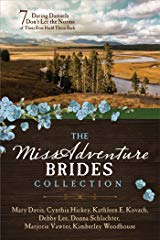I have recently seen two biopics played by the same actor, Chadwick Boseman. The first was 42, the inspirational story of how Brooklyn Dodger Jackie Robinson broke through the color barrier. The other was Get on Up, that followed James Brown throughout his impoverished and violent youth to becoming the Godfather of Soul.
I liked them both, even though they presented themselves in totally different ways.
Many times, I’ve been approached by someone wanting to write a memoir—either their own or a beloved family member. I cringe because most of the time, these well-meaning people don’t have the writing skills to pull off such an important task. They often want to put everything in, from the spank of the newborn’s bottom to the casket being lowered. Every conversation the subject has ever had to every accomplishment they’ve ever done. More often than not, there are wonderful stories to be told, important stories that must be chronicled. And if simply chronicling these stories is the ultimate goal, than I say, have at it. Write down everything.
But if the author wants to publish this work, they must approach it much differently. No publisher in their right mind will take on a five-hundred page memoir. So what must be done to make it marketable?
Pick a theme.

“(Robinson) chaired the National Association for the Advancement of Colored People's (NAACP) million-dollar Freedom Fund Drive in 1957, and served on the organization's board until 1967. In 1964, he helped found, with Harlem businessman Dunbar McLaurin, Freedom National Bank—a black-owned and operated commercial bank based in Harlem. He also served as the bank's first Chairman of the Board. In 1970, Robinson established the Jackie Robinson Construction Company to build housing for low-income families.”
The one constant in Jackie Robinson’s life was his activism toward equality for his race, championing African-Americans in many walks of life, not just sports.
Robinson led a full and fulfilling life. How do you put all of that in a limited number of pages or contain it within a couple of hours at the cinema?
In the movie, 42, the writer smartly concentrated on the time in history when Robinson broke through the color barrier and became the first black player in major league baseball. The theme throughout the film is “equality.” The story comes off clean, threading the theme throughout with an expert hand. 42 is a hard, but beautiful movie to watch.

The theme of this movie is “overcoming.” It clearly portrays Brown’s almost savant ability to overcome his circumstances through music. The approach is different than 42. It is rather vignettes of Brown’s life in non-chronological order and was, for the most part, well-done—once I realized what they were doing. It starts with the already famous singer having a meltdown over someone using his private bathroom in his place of business. The scene was vulgar, long, and drawn out. The scene ends with him shooting the ceiling with a shotgun and then leading the police in a chase. We find out later why he had the meltdown, so hang in there. The scene then changes to Brown as an eight-year-old, and shows his impoverished beginnings as the child of an immature mother and abusive father. The movie then continues to hop around from decade to decade, but what the writers did correctly was put his life in themed chapters. These chapters, that are titled on the screen, pull from many aspects of Brown’s life. It sounds confusing, but I was able to follow, and for my ADD brain, that’s something to note.

This is how a memoir is supposed to be written. Pick a theme, and follow it.
The moral is: When writing a memoir or biopic, choose one theme from the subject’s life. If they’ve done tons of exciting stuff, then write tons of books. Don’t confuse the reader with things, albeit important things, that don’t speak toward that theme.






